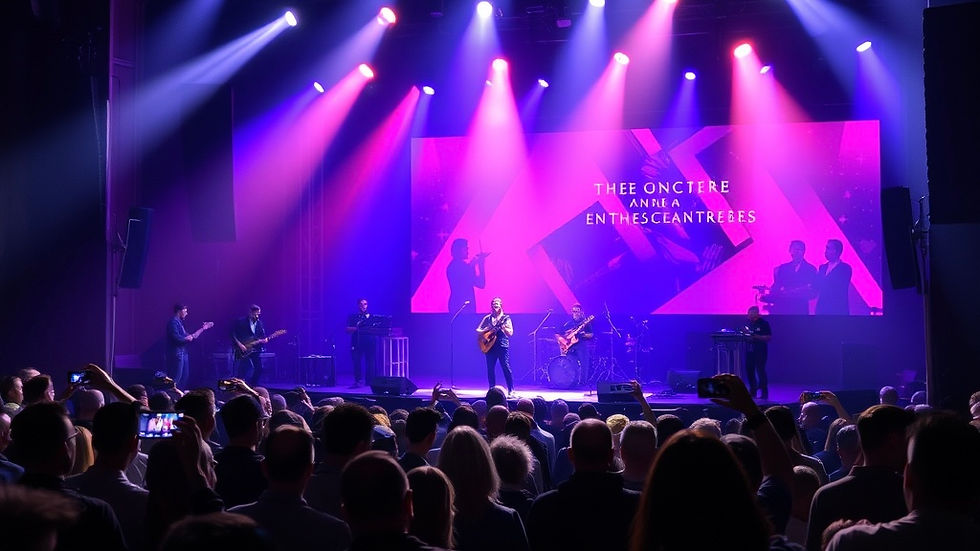The Evolution of Music Streaming Platforms: From MP3s to AI-Curated Playlists
- Umma Radio

- Aug 5
- 3 min read
Introduction
In the past two decades, music consumption has undergone a revolutionary transformation. From the days of vinyl and CDs to the rise of MP3s and now streaming platforms, how we listen to music has changed dramatically. The evolution of music streaming platforms has not only altered how artists distribute their music but also how fans discover, engage with, and support their favorite acts. This blog takes a deep dive into the timeline, technology, and cultural impact of music streaming—from its humble beginnings to the AI-powered platforms we use today.

The Early Days: File Sharing and the MP3 Revolution
Before Spotify and Apple Music, the music world experienced a digital upheaval in the late 1990s and early 2000s. Platforms like Napster, Kazaa, and LimeWire allowed users to share MP3 files for free. Although revolutionary, these peer-to-peer networks were riddled with legal battles and piracy concerns. Nevertheless, they revealed one important truth: listeners wanted digital, on-demand access to music without having to buy a full album.
These early platforms forced the music industry to confront a rapidly digitizing world—and it wasn’t ready.
The iTunes Era: Owning Digital Music
In 2003, Apple launched iTunes, a legal alternative that let users purchase individual songs for $0.99. This was a game-changer. For the first time, music fans could build their own digital libraries, cherry-picking their favorite tracks rather than being forced to buy entire albums.
While iTunes helped combat piracy and shifted consumer behavior, the model still relied on ownership. Users had to pay for each track or album—a structure that, while innovative, would eventually give way to something even more convenient: access over ownership.
The Rise of Streaming: Spotify and the Subscription Economy
The real tipping point came in 2008 with the launch of Spotify. The Swedish-born platform introduced a subscription-based model that allowed users to stream unlimited music for a monthly fee—or free with ads. Instead of downloading songs, users could now access a global music library in real time.
This ushered in a new era where the focus shifted from owning music to accessing it anytime, anywhere. Spotify’s success sparked the birth of competitors like Apple Music, Tidal, Deezer, and Amazon Music—each offering variations on user experience, audio quality, and exclusive content.
Streaming democratized the music industry, giving independent artists new avenues to release music without needing a label. However, it also sparked debates about fair pay for artists, as per-stream royalties remain incredibly low for most.
Personalization and AI: The Algorithmic Era
What sets modern streaming platforms apart is data-driven personalization. Services like Spotify and YouTube Music use sophisticated AI algorithms to curate playlists based on listening habits, moods, locations, and even the time of day.
Features like Spotify Wrapped, Discover Weekly, and Apple Music Replay show just how much these platforms know about our tastes. Algorithms are now tastemakers, capable of introducing emerging artists to millions of listeners in an instant.
AI is also beginning to influence music creation itself, with tools that help artists compose, mix, and master songs, as well as platforms experimenting with AI-generated music.
The Social Shift: Sharing and Community Building
As streaming evolved, platforms began integrating social features to enhance user engagement. From collaborative playlists to real-time listening sessions and integrations with TikTok, Instagram, and Twitter, streaming has become as much about community and identity as it is about consumption.
Listeners no longer just enjoy music—they share it, analyze it, and connect with others over it. Artists also benefit, using streaming data to plan tours, tailor their content, and build direct relationships with fans.
The Future: Web3, NFTs, and Decentralized Streaming?
Looking ahead, the next evolution may lie in decentralization and blockchain technology. Platforms like Audius and Opus are experimenting with Web3 models that aim to give artists more control and better pay through direct fan support and NFT-backed music ownership.
Additionally, the integration of virtual and augmented reality may create immersive concert experiences right from a user’s device, further blurring the lines between physical and digital music engagement.
Conclusion
The evolution of music streaming platforms is a story of constant adaptation. From illegal file sharing to AI-curated playlists and the promise of blockchain, the journey reflects broader shifts in technology, consumer behavior, and cultural values. One thing is certain—music will always be at the center of innovation. And as streaming continues to evolve, it will be exciting to see how the relationship between artist and listener transforms in the years to come.
Call to Action: What’s your favorite music streaming platform, and how has it changed the way you listen to music? Share your thoughts below or tag us on social media with your #MusicEvolution story.



Comments